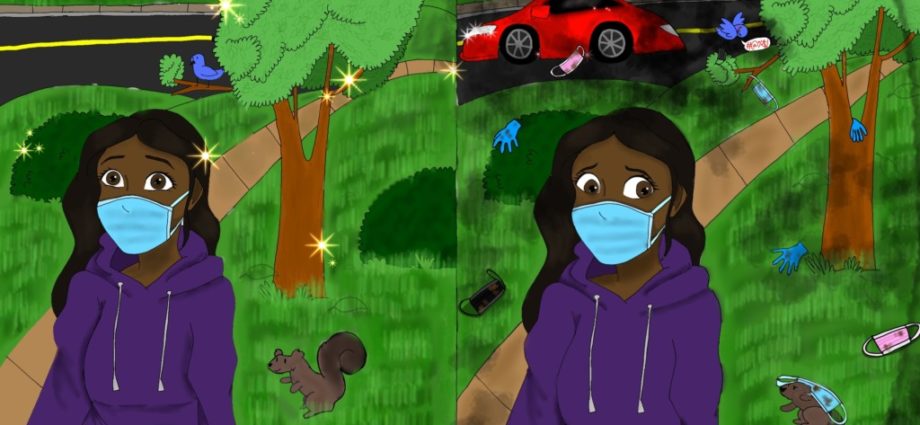COVID-19 disrupted decades of in school recycling and caused a higher demand for plastics.
Pre-pandemic, members of the student organization Earth Force took care of recycling, and current members are trying to revive the process.
Ordinarily, once a week, members would take recylables to the recycling dumpster behind the school, Earth Force sponsor and science teacher Andrew Litterst said.
“This year, being the first time we’ve had an opportunity to do this in basically two years, we are dragging our feet a little bit,” Litterst said. “But the Earth Force president and myself are starting to figure out some of the logistics behind this.”
Litterst said confusion over uncertain recycling guidelines leads to plastics being treated as trash.
“What we can and can’t recycle, especially here in Fairfax County, changes every other year,” Litterst said. “If too many non-recyclable materials end up in a recycling bin, unfortunately, the whole thing ends up just being thrown out.”
Litterst said Fairfax County incinerates its waste, but other areas dispose of it in landfills.
“About 90% of trash [in Fairfax County] gets burned and heat from that incineration is used to make electricity,” Litterst said. “In places that do use landfills, a lot of [plastic] can get blown into the environment or into the ocean and lead to other far-reaching environmental problems.”
Litterst said Marshall is a green-certified school, but more could be done. Plans include a county wide initiative to establish solar panels on school rooftops by 2050.
“We are making steps to become greener every year,” Litterst said. “But as a county, we’ve still got some work to improve on.”
Don’t recycle in school bins
Cafeteria waste
Cafeteria waste is nothing new, but with the recent FCPS no-cost meal policy, some students are wondering if food and packaging waste may be increasing.
The county began providing students with free meals this year, but students still need to select three food items to qualify for a reimbursable meal.
“The no-cost [meal policy] is a change for our program, and as a result, the number of students that are participating has significantly increased,” FCPS Food Services nutritionist Amanda Schlink said.
More food inevitably means more trash, a trend custodian Darrell General confirmed.
“Kids are getting more lunches, … accumulating a lot more waste,” General said.
While trash is a necessarry result of running a cafeteria, students like senior Krishna Girish Kumar wonder if food itself is being wasted.
“A couple of weeks ago, I went up to the line and asked if I could take a fork, and the person at the counter pointed at the line,” Girish Kumar said.
Because he had been asked to purchase a meal for a fork in previous years, Girish Kumar said he assumed he had to get more food in this instance too.
He also said he worries about the impact of distributing food to students when they don’t plan to eat it.
“Food waste is becoming a really big concern to the environment right now, and schools shouldn’t be promoting that,” Girish Kumar said. “I feel like just for a fork, getting a whole meal is a little bit absurd.”
Another question is packaging waste, as COVID concerns led to more items being individually packaged.
Schlink said each food vendor has their own packaging policy, so schools are not in control of it.
She also said there is no data connecting food waste to the new free lunch program at this time.


